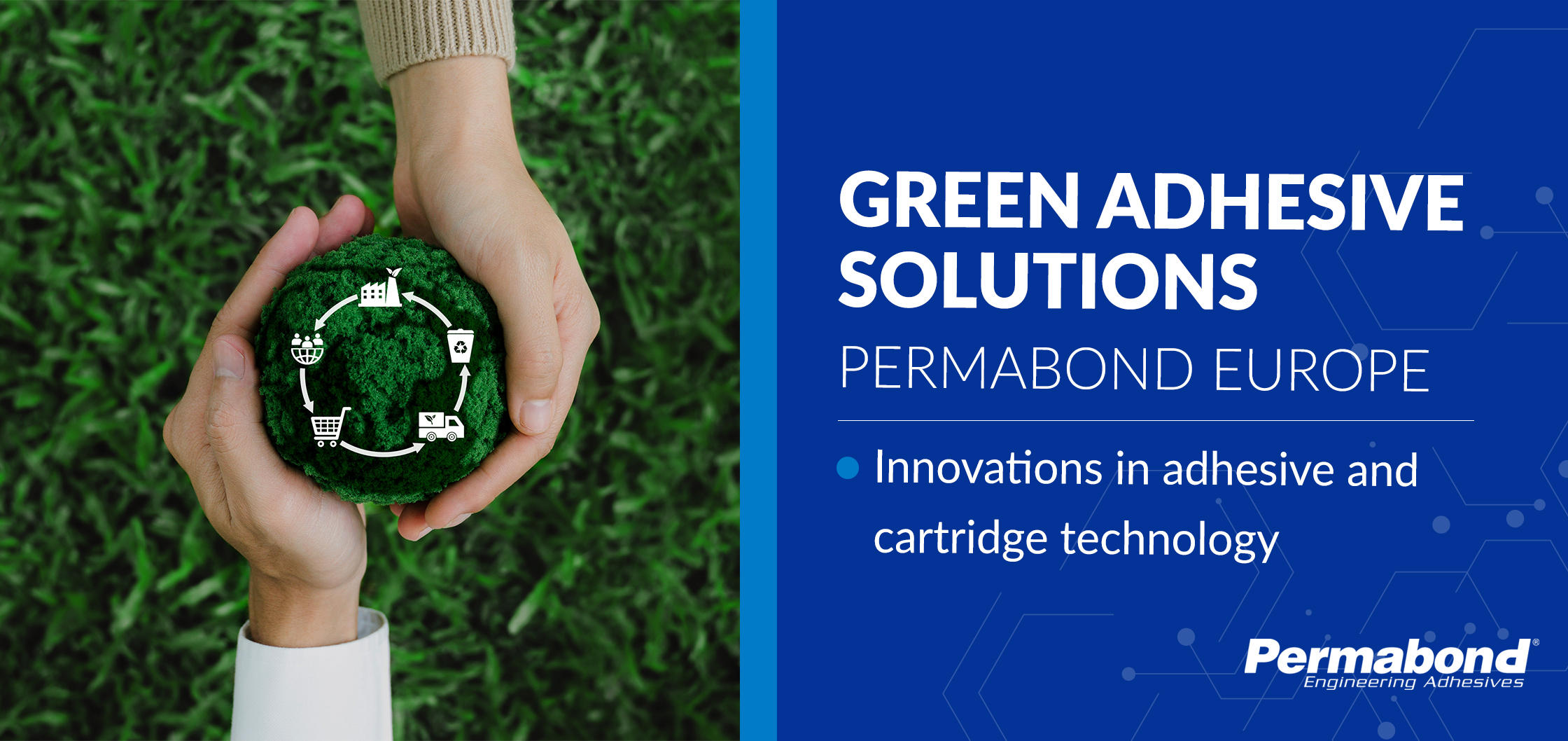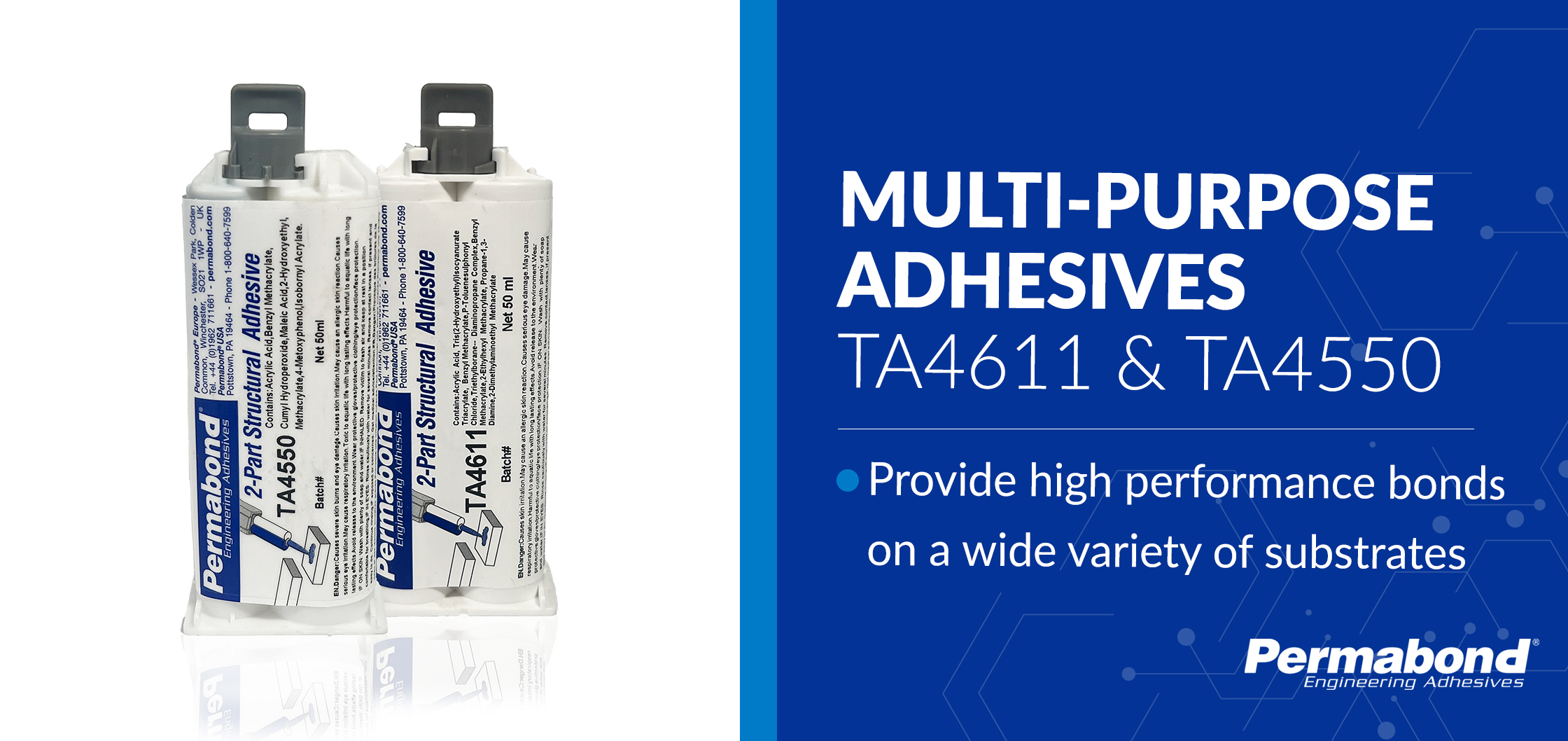What is Acetal (POM – Polyoxymethylene)? Acetal is a popular thermoplastic. Therefore, its use spans a number of industries. Generally, acetal has a high surface slip lubricity, making it difficult to bond acetal. This plastic is fairly low cost and has good structural properties. Consequently, it is often used instead of metal. POM is very high strength, with good impact resistance, low rate of water absorption, good chemical resistance (even against solvents), high dielectric strength, and good flame resistance.
How to Bond Acetal?
There are several options. First, consider TA4610, TA4611, TA4631. Permabond TA46XX Series structural acrylic adhesives form very strong water-resistant bonds to acetal.
Of course, if water resistance is not required, Permabond polyolefin primer used in conjunction with cyanoacrylate adhesives is a good option.
Due to the high-temperature resistance of acetal, epoxies such as Permabond ES5748 can be considered. To bond acetal, cure the ES5748 at the low-temperature end of the cure schedule.
Another option is 2 part polyurethanes. Two-component polyurethanes offer some degree of adhesion to acetal, so they may be considered for limited-stress joints or potting.
To determine the best specific adhesive to bond acetal in your application, please provide some detail to our technical team, and we will get back to you with a recommendation.
Tips for surface preparation:
1. Since, as I’ve said, acetal has a high surface slip lubricity, it is a good idea to grit blast or use wire wool, red Scotch-Brite or grit paper, or emery clothed to help provide better adhesive keying.
2. Then do a solvent wipe with Isopropanol or Permabond Cleaner A to remove particulate.
About Acetal
Blends of acetal include:
-
- Glass filled
- PTFE filled for improved slip properties (low friction)
- Toughened, abrasion resistant
- UV stabilized, pigmented
- Antistatic
- And also Conductive
Acetal Properties:
- Surface energy: 36 mJ/m² (= difficult to bond)
- Maximum service temperature: 100°C
- Softening temperature: 160°C
Uses
- Cogs, gears, plastic bearings
- Conveyor rollers
- Impellers
- Seat belt restraints
- Motor and pump housings
- Pipe fittings
- Ski bindings
Tradenames: KEPITAL®,IUPITAL®,CELCON®,ULTRAFORM®,KOCETAL®,DELRIN®,KemlexTM,ULTRAFORM.
IUPITAL®is a registered trademark of Mitsubishi.
CELCON® is a registered trademark of Ticona Corporation.
ULTRAFORM® is a registered trademark of BASF.
KOCETAL® is a registered trademark of Kolon.
Kontaktieren Sie uns
Produkte
Technischer Beratungsdienst

Permabond hilft Ihnen, den richtigen Klebstoff für Ihre Anwendung auszuwählen.
Regionale Vertriebshändler

Produkte von Permabond sind über Vertriebshändler in allen Teilen der Welt zu beziehen. Hier können Sie unsere Vertriebshändler finden.






